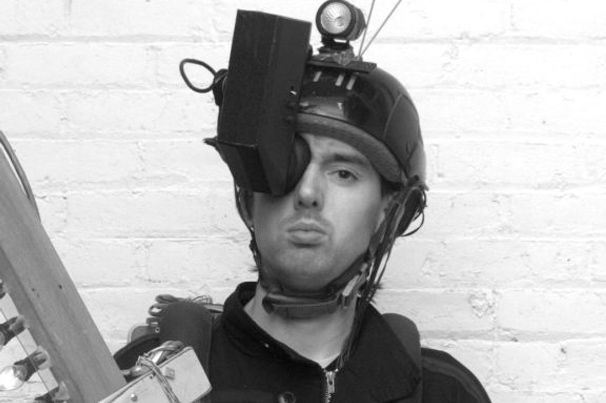Unbearable Wearables
 Steve Mann's early wearable computer prototype
Steve Mann's early wearable computer prototype In this episode of the NPR podcast Invisibilia, the hosts interview early wearables creators from MIT’s media lab and ask if technology is changing us. Of course, those super-nerds believe that wearing reality-augmenting tech like Google Glass only helps us be better versions of ourselves and don’t understand why people would question one form of technology over another, like say, eye glasses or shoes.
Here I got a little angry. The very pleasant hosts and creators of Invisibilia are not about challenging their interviewees as much as continuing a conversation. So I’ll challenge them instead. There is a vast and profound difference between Internet connected technology and technology that is clothing. The conversation continues that Plato argued against writing the way we do about mobile phones today, except Plato’s speculations, while somewhat true, have failed to end civilization the way fears around mobile phones are still forming.
Technology obviously changes us. Sometimes for better, sometimes for worse. At its worse, technology does break connections to other people (those in the room as opposed to strangers on the other side of the planet). It affects our “presence”. When drivers use their mobile devices, they aren’t distracted as much by pretty colours as they are by speaking to someone while they are driving. The driver’s brain is doing too much work imagining the speaker on the other end of the call to be present enough to drive a car. Drivers not on the mobile phones are encased in a bubble of glass, steel and plastic and as such are disconnected from people walking on the street. Drivers stop seeing pedestrians as vulnerable people, but more as objects through a screen on the road (if they see pedestrians at all). I think people drive worse when their windows are up because they are completely and physically separated from the world outside the vehicle. Have you ever talked to someone who keeps both earbuds in while they talk to you? Are they listening to you, or to another caller or to a song? Are they present at all or are they in their own audio bubble? Talking to someone tapping out a message on a mobile phone or laptop is equalling disconcerting. I’ve not spoken to someone reading their e-mail on Google Glass but my guess is why bother? They aren’t really there anyway. They are in another space of textual communication rather than a verbal one. Their nonverbal cues point to their focus being elsewhere.
Technology sometimes makes us break social interaction and nonverbal communication. This isn’t too dissimilar from someone with Asberger Syndrome. It's not hard to imagine that the scientists of MIT or early adopters of Google Glass were never really that good at social interaction or nonverbal communication to begin with. The reason someone coined the term “Glasshole” is because the wearer of the technology was too distracted to know they were being a-holes to begin with.
As designers we often aspire to be technology optimists, but in the area of wearables we should keep in mind not just the experience of the person using the technology but also the experience of others interacting with the wearer. It may take time for wearable etiquette to form but that doesn’t excuse us from ignoring it.
It’s a little like smoking. If you smoke, I don’t really care if your habit is killing you, just don’t take me down with you. E-cigarettes or “vaping” on the other hand may turn out to be even less healthy than smoking (hard to believe) but, so far, it seems to be pretty benign to bystanders. Google Glass will eventually be invaluable to professional users such as pilots, surgeons, forklift drivers, or film directors but because it draws attention of the eye, thus the gaze of the user stares nowhere in particular, it will always be intrusive to face-to-face conversation (oh, sorry, “F2F interaction”).
Labels: design, technology


0 Comments:
Post a Comment
<< Home